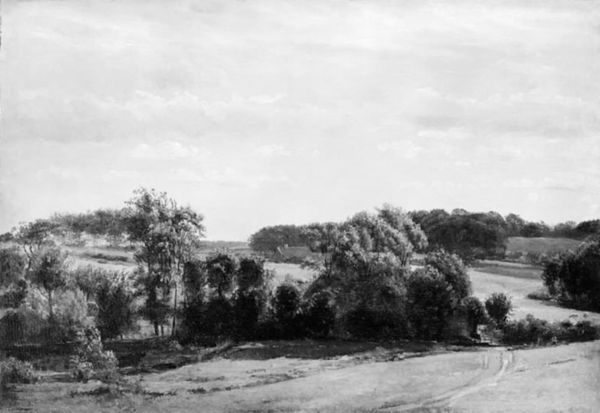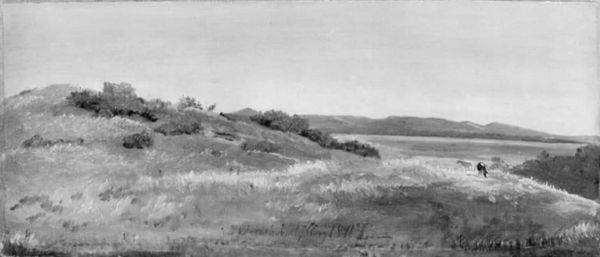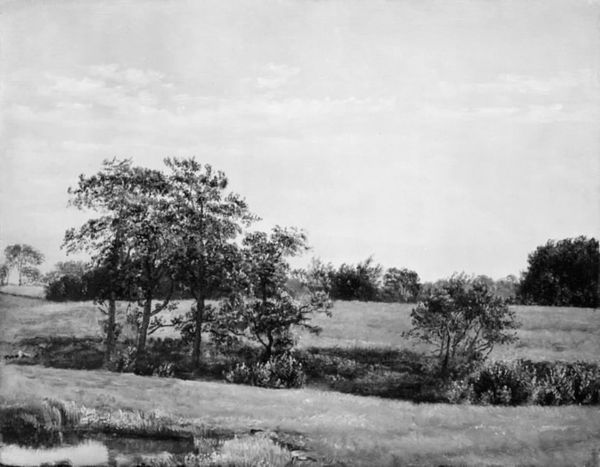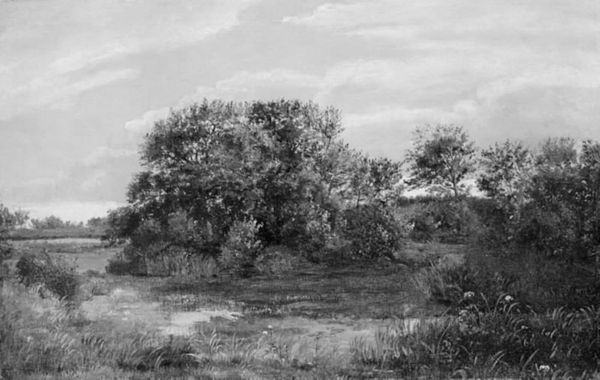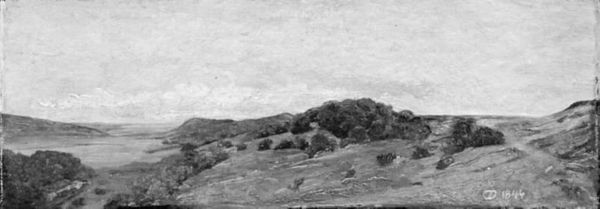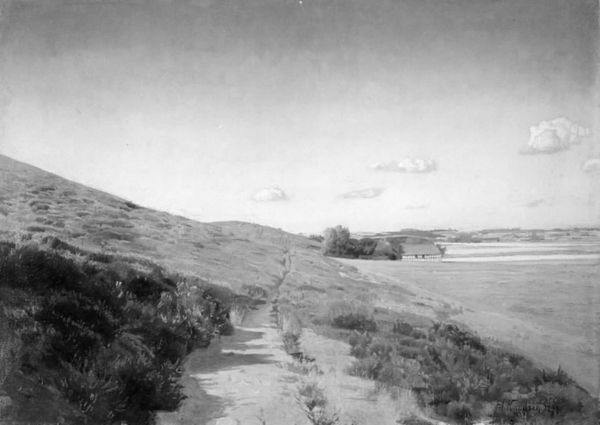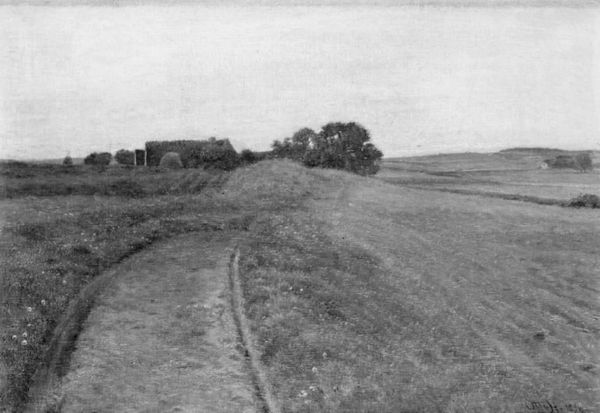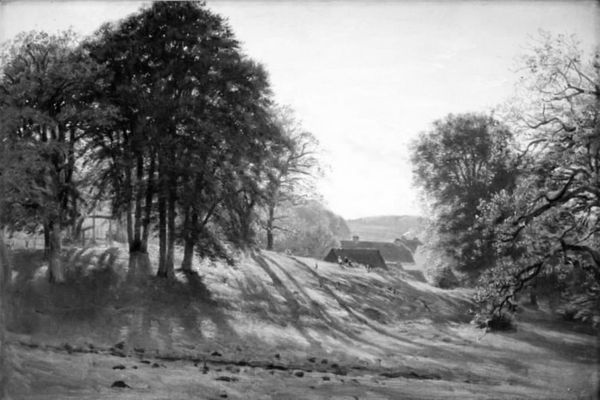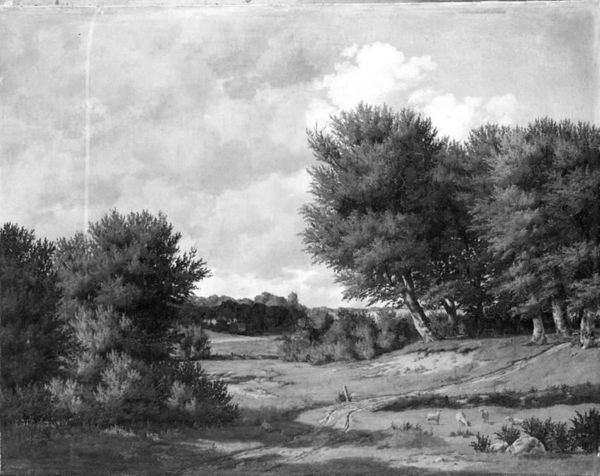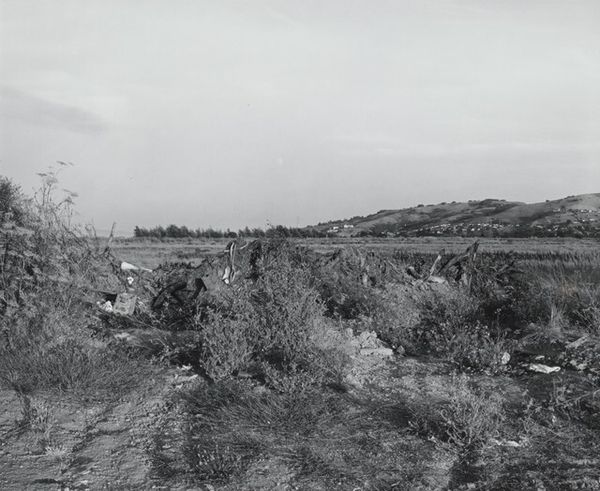
painting, plein-air
#
painting
#
countryside
#
plein-air
#
landscape
#
romanticism
#
black and white
#
monochrome photography
#
monochrome
#
realism
#
monochrome
Dimensions: 17.5 cm (height) x 29 cm (width) (Netto)
Editor: This is Dankvart Dreyer's "View of Mølleknap Hills, Funen," painted sometime between 1845 and 1848. It's an oil painting currently held at the SMK. What strikes me is how the composition seems almost divided, with a close-up of foliage on one side and a wide-open landscape on the other. What do you see in this piece? Curator: Precisely. The dichotomy you observe is the cornerstone of this painting’s formal arrangement. Consider the contrast between the tangible texture of the dense shrubbery in the foreground, articulated with individual brushstrokes to evoke volume, and the planar expanse of the landscape beyond. It appears almost as though one side is intentionally created using monochrome photography and painting on the other side. Editor: It's interesting how the monochromatic tones create this planar expanse. Do you think this contrast of texture and plane was a common compositional device at the time? Curator: Yes and no. Within Realism, painters were experimenting with representing depth and space. Dreyer’s method utilizes formal elements to convey a sense of distance while still emphasizing the materiality of paint on canvas. Note how the tonal range gradually diminishes as the eye recedes into the landscape, compressing space into increasingly flattened zones. Does that alteration of tonal range shift your perception? Editor: I think I'm beginning to grasp it! The more distinct brushwork and darker values pull forward, while the softer lines recede into a somewhat indefinite background. So, it is this push and pull between depth and surface that defines its visual tension. Curator: Indeed. It reveals a profound meditation on the act of seeing and the conventions used to represent the three-dimensional world within the constraints of a two-dimensional plane. The overall effect makes a dynamic composition. Editor: Thank you for your detailed analysis! Looking closer at its compositional choices has entirely altered how I perceive Dreyer's work. Curator: My pleasure. Art's structural form invites viewers to delve into rich dialogues across time.
Comments
No comments
Be the first to comment and join the conversation on the ultimate creative platform.
